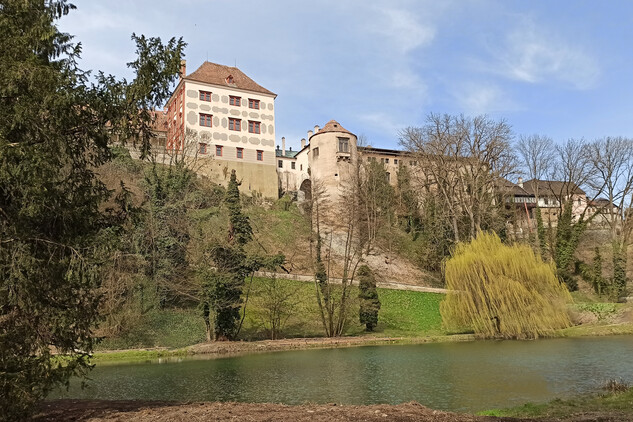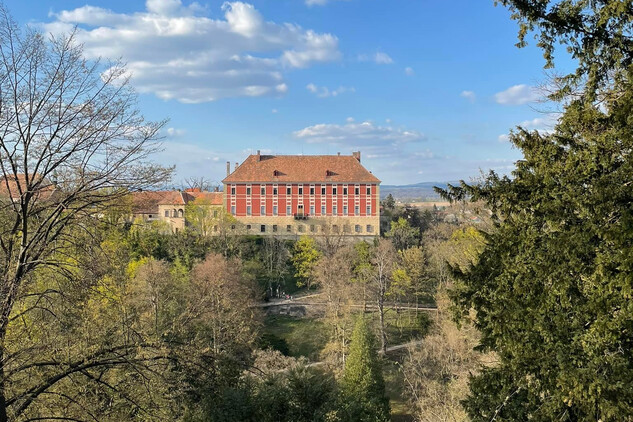The lower part of the park will be closed from November 3, 2025, until the start of the 2026 visitor season.
Castle park
The Opocno Chateau Park was founded in the 16th century and was part of the Opocno estate belonging to the Trcka of Lípa family. The southern part of the park, then a game preserve, was used not only for hunting game but also for breeding livestock, such as cattle and horses. The game-preserve, surrounded by a massive wooden fence covered with shingles, was at that time a huge area. The upper part of the park (today the area around the summer palace) was mainly used as a garden for growing vegetables, hemp and fruit trees for the needs of the chateau.
The main reconstruction and adaptation of the park took place at the beginning of the 19th century, when Rudolf Josef Colloredo-Mannsfeld (1772-1843) had the park transformed into a natural English landscape park.
The slopes were reforested, the ponds in the valley were modified, waterfalls and small buildings were built, and bridges over the Golden Brook were constructed. On the opposite rocky slope of the castle, a tangle of paths and stone steps was created, along with romantic views across the valley to the castle building and the town.
At the top of the park you can admire the early 17th century summer house and the palm greenhouse. In the valley, the aforementioned waterfalls, a gazebo and rare foreign trees.
The current size of the park is 22 hectares.
The park is accessible by gate from the Castle Street, from Hradecká Street, from Švamberk Street and during the opening hours of the castle by a gate from the arcaded courtyard via a stone staircase. From November to the end of March, the park in the valley of the Golden Brook is closed to the public. Only the flat part near the summer palace is accessible.

